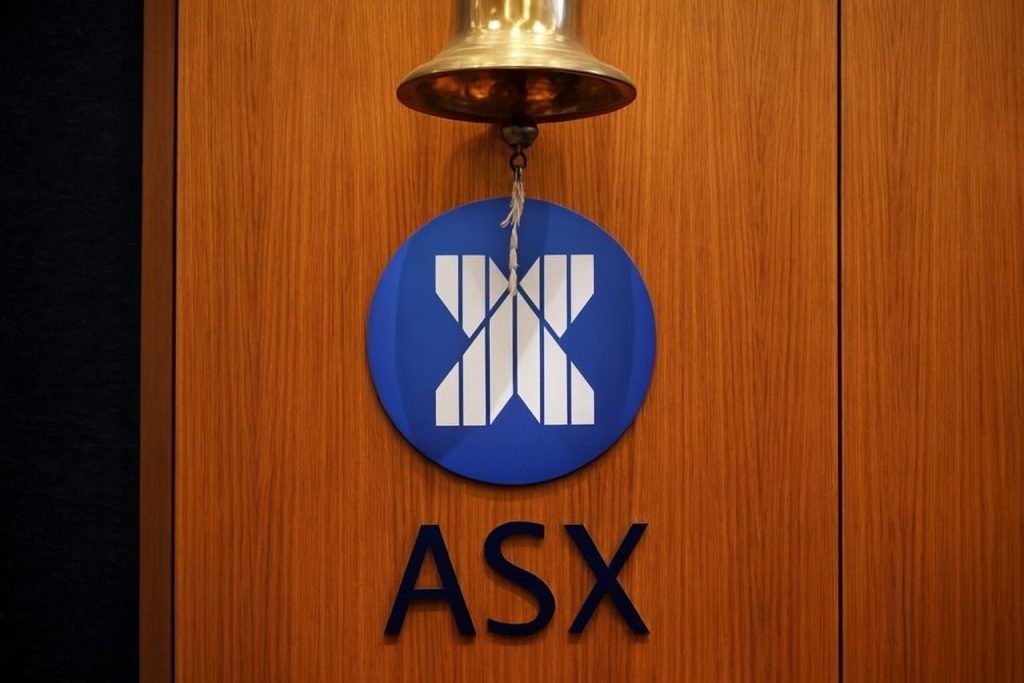China’s equity markets head into Monday’s open (November 24, 2025) after one of their sharpest weekly pullbacks since the spring crash, with global risk sentiment wobbling again and domestic data pointing to slower momentum. Here’s a structured look at what traders and long‑term investors will be watching when Shanghai, Shenzhen and Hong Kong ring the opening bell.
1. Where markets closed on Friday – and why sentiment is fragile
Chinese benchmarks ended last week on a distinctly risk‑off note:
- The Shanghai Composite closed Friday at around 3,834, down about 2.5% on the day and roughly 4% lower over the week. [1]
- The Shenzhen Component lost more than 3% on Friday, with the ChiNext growth board tumbling about 4%, underscoring pressure on smaller tech and growth names. [2]
- The blue‑chip CSI 300 index fell 2.4% on Friday to about 4,454, extending a multi‑day decline. [3]
- In Hong Kong, the Hang Seng Index finished around 25,220, down 2.4% on Friday and more than 5% for the week, with tech and financials leading losses. [4]
Across Asia, a broader selloff has been driven by a stronger US dollar, higher Treasury yields and profit‑taking in richly valued tech shares, according to regional market commentary. [5]
Why it matters for Monday:
- The market is coming off a steep short‑term drop, so positioning is fragile.
- Any fresh negative headline on global rates, AI valuations or China’s economy could trigger another wave of de‑risking at the open.
- Conversely, oversold conditions may tempt bargain‑hunters into sectors where the policy backdrop remains supportive.
2. October data: growth still “stable,” but clearly slowing
China’s October macro data send a mixed message: the official narrative is “generally stable,” but the details show clear cooling.
From the National Bureau of Statistics:
- Industrial value‑added rose 4.9% year‑on‑year in October, down from 6.5% in September. High‑tech manufacturing grew faster, at 7.2%, but the overall trend is moderating. [6]
- Retail sales increased 2.9% year‑on‑year, the weakest pace in over a year and a sign that consumers remain cautious despite heavy Singles’ Day promotions. [7]
- Fixed‑asset investment in the first ten months fell 1.7% versus a year earlier. Investment in real estate development plunged 14.7%, highlighting the depth of the property downturn. [8]
- The official manufacturing PMI stayed in contraction territory at 49.0 in October, even as forward‑looking expectations remained above 50. [9]
Reuters summed it up bluntly: factory output and retail sales grew at their weakest pace in over a year, with exports under pressure and new home prices falling at the fastest monthly rate in a year. [10]
At the same time, the IMF still projects China to grow about 4.8% in 2025, after upgrading its forecast earlier this year thanks to stronger‑than‑expected exports and easing US tariffs. [11]
What to watch Monday:
- Cyclical sectors (industrials, materials, consumer discretionary) may react to the “slow but not collapsing” narrative.
- Under‑owned quality names that benefit from high‑tech manufacturing and export exposure could see dip‑buying, while domestically oriented retailers and property‑linked plays may stay under pressure.
3. PBOC stance: LPR on hold, liquidity management in focus
On Thursday, the People’s Bank of China (PBOC) left its benchmark Loan Prime Rates (LPRs) unchanged for the sixth straight month:
- 1‑year LPR: 3.00%
- 5‑year LPR (key for mortgages): 3.50% [12]
This confirms a more cautious easing stance after earlier reserve‑requirement cuts and targeted liquidity injections. Analysts note that the central bank has revived talk of “cross‑cyclical” policy — smoothing the cycle rather than delivering large, front‑loaded cuts — and may be holding fire until early 2026 for the next wave of rate or RRR moves. [13]
A fresh, very near‑term catalyst:
- On Monday, November 24, the PBOC will issue 45 billion yuan of bills in Hong Kong (30bn in 3‑month, 15bn in 1‑year paper), part of its effort to manage offshore liquidity and promote yuan usage. [14]
Meanwhile, the yuan has firmed slightly in recent weeks: the onshore USD/CNY rate slipped to around 7.10 per dollaron November 21, its strongest level in about a week, helped by narrower US–China yield differentials and the US–China tariff truce. [15]
Implications for the open:
- Banks and rate‑sensitive financials will be watched for their reaction to a prolonged LPR pause.
- Offshore yuan sentiment and demand for the new Hong Kong bills could influence Hong Kong‑listed financials and CNH‑sensitive names.
- Exporters benefit from a relatively stable currency, but a stronger yuan can cap earnings upgrades.
4. Property and local government debt: still the core macro risk
The property sector remains the single biggest drag on confidence:
- Investment in real estate development is down nearly 15% year‑on‑year in the first ten months, with floor space sold and sales value both falling mid‑single digits. [16]
- New home prices are dropping again, and a multi‑year liquidity crunch has left many developers in or near default. [17]
Two policy‑related developments matter for equity investors:
- New debt‑management department at the Finance Ministry
- Earlier this month, the Ministry of Finance created a dedicated debt management department to oversee central and local government debt, including “hidden” liabilities in local government financing vehicles. [18]
- The department will help set debt ceilings, manage issuance and repayment, and monitor risk, following a 10 trillion yuan package announced previously to ease local financing strains. [19]
- Private REITs as an alternative funding channel
- Reuters reports that China’s private REITs market, launched in 2023 and restricted to professional investors, is expanding rapidly. 17 private REITs worth about 43 billion yuan have been approved this year, up from three last year, with 40 more applications in the pipeline. [20]
- This platform allows developers and asset owners to monetise commercial real estate (malls, offices, hotels, industrial parks, data centres) and offers investors yields around 5–6%, above long‑term government bonds. [21]
Analysts caution that private REITs won’t magically cure distressed homebuilders, many of which lack high‑quality cash‑flow assets, but they can reshape the business model for better‑positioned commercial property owners and support parts of the financial sector (brokers, asset managers, insurers). [22]
What to watch Monday:
- Developers with strong commercial portfolios or REIT pipelines may outperform pure homebuilders.
- Brokerages and insurers exposed to private REIT issuance and investment could trade as a levered play on this “quiet reform” theme.
- Any new headlines on Country Garden, Evergrande or local government debt restructuring could quickly swing sentiment in banks and construction names.
5. Capital‑markets reform: opening the door wider to foreign money
Beijing is doubling down on a strategy of “slow bull” engineered through structural reforms rather than brute‑force stimulus.
Key moves in the last month:
- The China Securities Regulatory Commission (CSRC) announced a plan to streamline the Qualified Foreign Investor (QFI) regime, easing access requirements, creating a “green channel” for long‑term funds (sovereign wealth, pensions, endowments), and allowing QFIs to use ETF options and more commodity futures for hedging. [23]
- Detailed legal analysis shows the package also improves operational efficiency, allows broader non‑trade transfers, clarifies treatment of foreign public funds under short‑swing rules, and tightens oversight of program trading and total‑return swaps, aiming to combine openness with “see‑through” regulation. [24]
- Separately, Beijing has signaled support for a renminbi trading counter under Stock Connect, which would let mainland investors buy Hong Kong stocks directly in yuan — a step designed to deepen integration and boost the currency’s international role. [25]
At the same time, Reuters has reported that CSRC chair Wu Qing — the architect of many of these reforms and a key figure in the recent rally — has asked to step down for health reasons, though the resignation has not yet been confirmed. Markets worry that his departure could dent confidence in the “reform plus support” playbook. [26]
Potential impact at the open:
- Foreign‑flow‑sensitive segments (large‑cap financials, consumer blue chips, A/H dual‑listed names) may remain volatile as investors assess whether reform momentum can continue without Wu.
- Any official confirmation or denial of his exit before or during Monday’s session would be market‑moving.
6. Financial sector consolidation: brokerages in the spotlight
One of the clearest micro‑level catalysts is brokerage consolidation:
- China International Capital Corp (CICC) has announced plans to acquire Dongxing Securities and Cinda Securities via share swaps, creating the country’s fourth‑largest investment bank with assets above 1 trillion yuan. [27]
- The deal aligns with Beijing’s goal of building globally competitive, state‑backed financial champions and trimming a crowded securities industry of roughly 150 firms. [28]
Shares of CICC and peers have already rallied on expectations of more M&A across the sector. [29]
What to watch Monday:
- Brokerages and investment banks could continue to trade as a policy‑favoured sector, especially those seen as potential consolidation targets.
- The market will look for any new guidance on capital requirements, pay reforms or overseas listing rules, all of which feed directly into brokerages’ profitability.
7. Lithium, EVs and new‑energy stocks: from boom back to reality
Regulators are not just tweaking stock market rules — they’re also leaning against commodity speculation:
- On Friday, the most‑traded lithium carbonate futures contract in Guangzhou plunged 9%, hitting its daily limit after the exchange raised transaction fees and curbed daily open positions to stamp out speculative trading. [30]
- The drop followed a rapid rally that had pushed prices to their highest since mid‑2024, and Bloomberg reported that EV‑battery champion CATL is preparing to restart a big lithium mine in Jiangxi, adding to supply. [31]
At the same time, Foxconn’s chairman warned last week that China’s crowded EV market faces a shakeout, with reduced subsidies squeezing many unprofitable startups. Foxconn plans to spend $2–3 billion a year on AI and sees EV production shifting toward an outsourced model — a message that matters for both EV builders and auto supply chains. [32]
This comes as major Chinese EV maker BYD has already reported its steepest profit drop in more than four years and trimmed its 2025 sales targets, underlining how intense competition has become. [33]
Takeaways for Monday:
- Lithium producers, battery makers and EV names are likely to be highly reactive to any follow‑up commentary from regulators or companies.
- The new‑energy complex is being squeezed simultaneously by regulatory intervention, rising supply and profit pressure, even as long‑term policy still favours electrification and energy transition.
8. Global AI and chip drama: opportunity and risk for China tech
Global equity bulls have ridden an AI wave all year, but there are growing worries that parts of the trade look stretched:
- A fresh Reuters piece notes that investors are nervous about AI valuations and uncertain Fed rate‑cut timing, setting up a potentially turbulent year‑end for global stocks. [34]
- Chatham House warns of a possible US‑centred “AI bubble”, even as China’s lower‑cost AI models gain traction worldwide. [35]
On the policy side, US–China chip tensions are in flux:
- Nvidia has been under pressure after export controls effectively wiped out its China data‑centre business, but new reporting suggests the Trump administration is considering allowing sales of high‑end H200 AI chips to China again, which some analysts see as a potential “material win” for both Nvidia and Chinese AI demand. [36]
If export rules ease, China’s cloud and AI infrastructure names could gain from improved hardware access; if talks stall, investors will refocus on domestic chip and AI suppliers as strategic beneficiaries.
For Monday’s session:
- Expect large‑cap internet platforms, software names and semiconductor plays to trade in lockstep with global AI sentiment and any news on US export controls.
- Volatility may be elevated after last week’s broader tech selloff across Asia. [37]
9. Trade truce, rare earths and the new five‑year plan
Despite ongoing rivalry, US–China tensions have cooled slightly in recent weeks:
- At their late‑October meeting in Busan, Donald Trump and Xi Jinping agreed to cut some tariffs and temporarily ease several contentious issues, contributing to the IMF’s more upbeat China forecast. [38]
- Beijing has also agreed to suspend additional rare‑earth export curbs for one year, while Washington relaxes some measures in return — a modest positive for supply chains and manufacturers reliant on critical minerals. [39]
Domestically, the Fourth Plenum of the Communist Party in October foreshadowed China’s 15th Five‑Year Plan, with heavy emphasis on:
- “High‑quality development” in advanced manufacturing, EVs, telecoms and solar.
- Technological self‑reliance and stronger integration between civilian and military innovation. [40]
Why this matters for stocks:
- Exporters and supply‑chain plays benefit from a less hostile trade environment — at least temporarily.
- Policy themes in the coming plan should continue to favour EVs, renewables, advanced manufacturing, AI and digital infrastructure, even as near‑term earnings in some of these sectors remain under pressure.
10. The week’s calendar: what’s coming after Monday’s gap‑open
Monday itself is relatively light on headline domestic data, but markets will be looking ahead to a busy week:
- China October industrial profits are due Thursday, November 27, a key gauge of how slowing growth and margin pressure are hitting the corporate sector. [41]
- Official PMIs for November are expected at month‑end and will show whether the manufacturing contraction (49.0 in October) is deepening or stabilising. [42]
- Hong Kong will release October external trade data on November 25, which will feed directly into views on regional demand and re‑export activity. [43]
Earnings wise, a cluster of China‑related ADRs and growth names report on Monday US time / Monday evening Beijing time:
- LexinFintech, Tuya, WeRide and Lotus Technology all plan to announce Q3 2025 results on November 24, with calls scheduled into Monday night Asia time or early Tuesday morning. [44]
While these are primarily US‑traded, guidance from consumer‑credit, IoT, autonomous driving and premium EV names can shape sentiment toward their Hong Kong and mainland peers when markets reopen on Tuesday.
Practical watch‑list for Monday’s open
Putting it all together, here are the main themes and sectors many traders will have on their dashboards when China opens:
- Index level & breadth
- Does the CSI 300 hold above Friday’s lows, or does selling accelerate?
- Advancers vs. decliners in Shanghai/Shenzhen will reveal whether this is a broad‑based de‑risking or sector‑specific rotation.
- Financials and brokerages
- Reaction to LPR on hold, PBOC bill issuance, and the CICC mega‑merger narrative. [45]
- Property and REIT‑linked names
- Sensitivity to any new headlines on developer liquidity and local‑government debt, alongside interest in private REIT “winners.” [46]
- New‑energy, lithium and EV ecosystem
- Follow‑through from Friday’s lithium futures limit‑down and Foxconn’s warning about EV shakeouts. [47]
- Tech & AI
- Moves in major internet platforms, cloud/software names and chip‑exposed stocks in response to global AI volatility and any chatter on US export rules. [48]
- FX and export plays
- How a slightly stronger yuan and the Hong Kong bill sale affect exporters and Hong Kong‑listed China proxies. [49]
- Foreign‑flow proxies
- A/H dual‑listed blue chips, ETF volumes and Stock Connect turnover as investors digest QFI reforms and lingering uncertainty around the CSRC leadership. [50]
Final note
All of the above reflects publicly available information as of Sunday, November 23, 2025, and is intended strictly for informational and educational purposes. It is not investment advice or a recommendation to buy or sell any security or asset. Markets can react in unpredictable ways, and anyone considering trading or investing should do their own research and, where appropriate, seek advice from a qualified financial professional.
References
1. www.morningstar.com, 2. english.news.cn, 3. www.investing.com, 4. english.news.cn, 5. www.ebc.com, 6. www.stats.gov.cn, 7. www.reuters.com, 8. www.stats.gov.cn, 9. www.stats.gov.cn, 10. www.reuters.com, 11. www.reuters.com, 12. www.reuters.com, 13. www.bloomberg.com, 14. www.reuters.com, 15. www.investing.com, 16. www.stats.gov.cn, 17. www.reuters.com, 18. www.reuters.com, 19. www.reuters.com, 20. www.reuters.com, 21. www.reuters.com, 22. www.reuters.com, 23. www.reuters.com, 24. www.lexology.com, 25. www.reuters.com, 26. www.reuters.com, 27. www.reuters.com, 28. www.ft.com, 29. www.reuters.com, 30. www.reuters.com, 31. www.reuters.com, 32. www.reuters.com, 33. www.reuters.com, 34. www.reuters.com, 35. www.chathamhouse.org, 36. www.benzinga.com, 37. www.ebc.com, 38. www.china-briefing.com, 39. finance.yahoo.com, 40. www.atlanticcouncil.org, 41. www.lundgreensinvestorinsights.com, 42. www.stats.gov.cn, 43. www.lundgreensinvestorinsights.com, 44. www.globenewswire.com, 45. www.reuters.com, 46. www.reuters.com, 47. www.reuters.com, 48. www.reuters.com, 49. www.investing.com, 50. www.reuters.com







